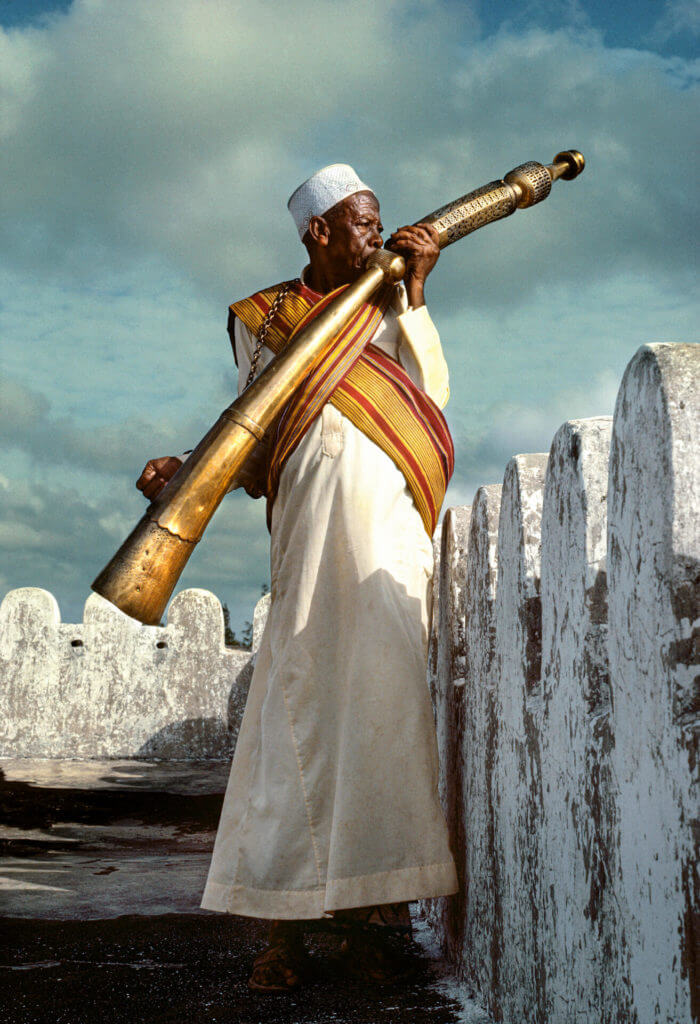
Swahili Wedding and Maulidi

The Swahili people live along the coast of Kenya and Tanzania and on nearby islands in the Indian Ocean. For centuries they flourished economically from the dhow sea trade which connected this part of Africa to Arabia, India, and China.
The Island of Lamu, off the coast of Kenya, was once the main port of the East Africa Coast, and has a rich material culture, over 1000 years old, as illustrated in the 16th century when the inhabitants of Lamu were called “the wearers of gold”.
In Swahili society the sexes are strictly segregated. Whilst men are largely involved in the dhow sea trade, religion, fishing and crafts, women spend most of their lives confined to the innermost chamber of their carved coral houses. The niches in these chambers are decorated with antique porcelain plates believed capable of absorbing evil spirits from the room where women undergo their most important life passages.
Weddings and religious festivals are some of the most important ceremonies for the Swahili. At the time of marriage, a Swahili elder, traditionally blows the brass Siwa horn to announce the ceremony.
The bride, confined for several days before her wedding, undergoes a series of special beauty treatments. Her body is massaged and perfumed with sandalwood and her hands and feet are decorated with elaborate henna designs. When the beautification process is complete, the bride sits veiled from head-to-toe on her wedding bed strewn with fragrant jasmine flowers. She awaits the first visit from her husband who will not see her unveiled until their wedding night. On this occasion the bride may be accompanied by her Somo, an older woman who is concealed under her bed, whose role is to assist the bride and groom in consummating the marriage and proclaiming her virginity.
At the climax of the wedding ritual, the bride is put on display for the community of women in Lamu. Dressed in sumptuous satin and rosettes of jasmine, she begins the process of establishing her position in the female Swahili community where she will spend most of her life.
Maulidi, the annual celebration of the birth of the Prophet Mohammed, attracts hundreds of visitors from all over East Africa.
The population of Lamu swells with excited yet pious, devotees thronging the narrow streets to watch and participate in the parades. The celebrants gather at the great Riyadha Mosque, founded by Sharif Habib Swaleh, who was a direct descendent of Prophet Mohammed. At the end of the 19th Century he introduced a unique version of Maulidi: joyous and festive, yet devotional, which most importantly strengthened the cultural ties of Lamu’s diverse communities.

The Swahili people live along the coast of Kenya and Tanzania and on nearby islands in the Indian Ocean. For centuries they flourished economically from the dhow sea trade which connected this part of Africa to Arabia, India, and China.
More...
The Swahili people live along the coast of Kenya and Tanzania and on nearby islands in the Indian Ocean. For centuries they flourished economically from the dhow sea trade which connected this part of Africa to Arabia, India, and China.
More...
